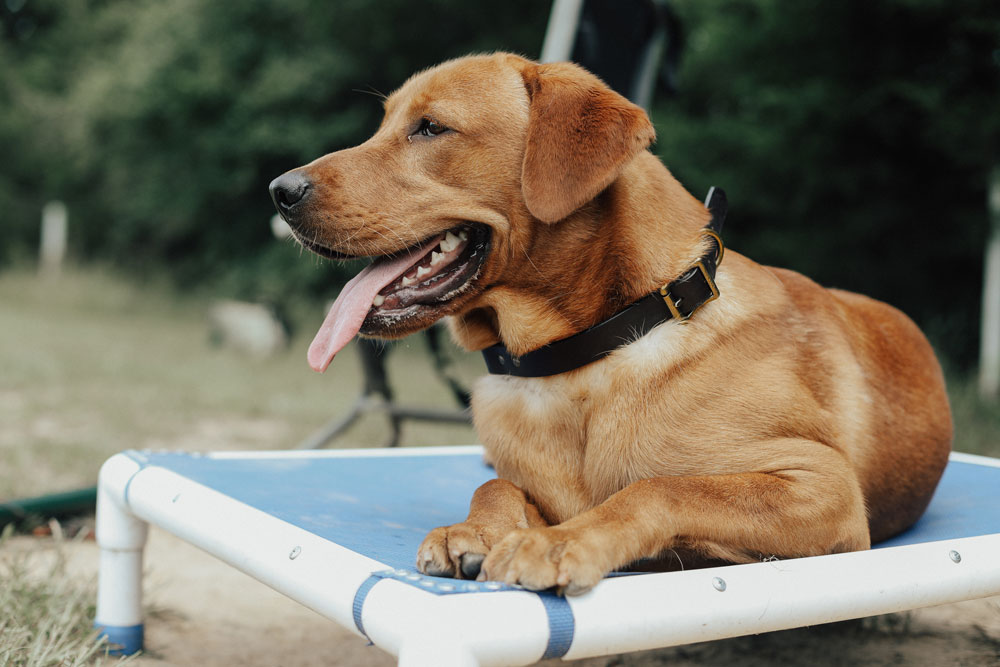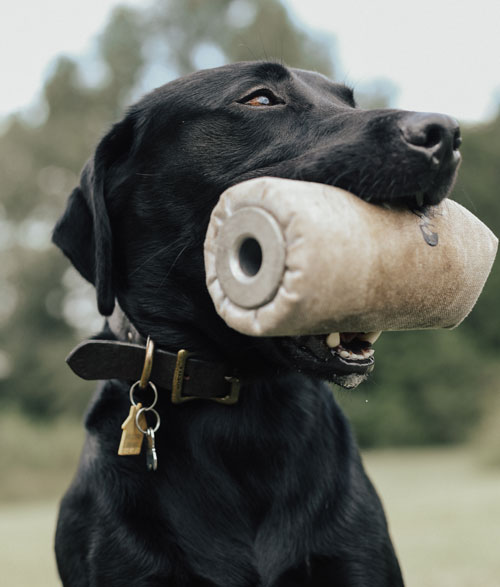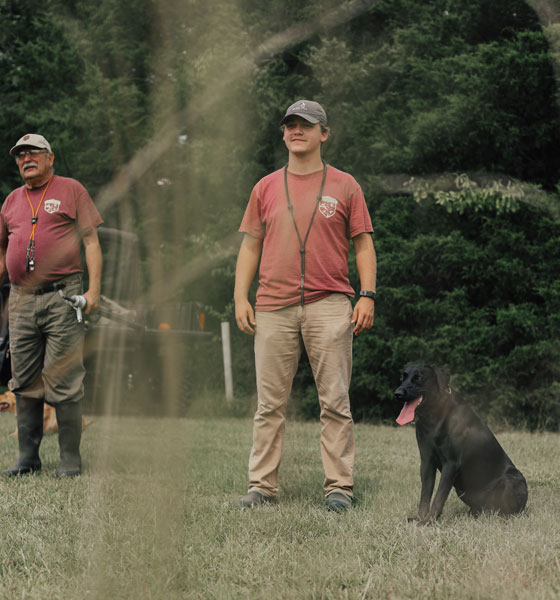Training your hunting dog is a long, arduous, but, ultimately, fulfilling job. And you don’t have to wait until the fall hunting season rolls around to ready them for their future as a hunting dog. There’s plenty to do with your pup in the summertime before the cold weather brings the hunters out in droves.
Summer is the perfect time to get you and your new hunting pup out of the house after a long winter. The warmer temperatures make it easy to build your dog’s stamina, try out some retrieval drills, and hone their marking ability.
If you focus on diet, strength-training, and hunting-specific activities, it can help your pup hone their instincts and become the best hunting companion.

Watch What Your Dog Eats
Many hunters opt for cheaper, less nutrient-dense food in the off-season when your dogs aren’t as active as they are when they’re out in the field. About a month before the season opens, switch your pup to a high-protein diet, which helps them build muscles and improve stamina.
Not only should you be changing up your dog's food, but you should also match the food quantity and quality to their activity level. If you’re training your dog hard this summer in anticipation of hunting season, make sure they are eating enough of the right kind of food to make them strong and hardy.
Take Your Pup for a Run
Running with your dog is one of the best training exercises you can offer them. Especially in the off-season when your pup may not be getting the same level of activity they were getting in hunting season, you should pair a protein-rich diet with daily running.
Running with your dog is a bonding activity for your pack. It doesn’t matter if you’re training blood-tracking dogs or upland bird dogs; running helps make a puppy into a lean, mean hunting machine.
A daily run increases your dog’s stamina and endurance and builds long, lean muscles. The pads on their paws will also toughen up over the miles, which helps keep them comfortable when they’re contending with the ice, snow, and other naturally abrasive materials underfoot.
To avoid affecting your puppy’s joints or growth plates, don’t run with them until they are a year-and-a-half old. Start slowly and increase your mileage incrementally.
If you’re training them in the summer, be mindful of the summer heat. When they are acclimating to running in the heat, only take them out for half an hour, and take a portable water bowl and a bottle along with you for drink breaks. Water retrieves are a wonderful balm after a hot, dusty run, so run to spots you know you can access water for them.
Dogs Can Strength-Train, Too
One of the best ways to get your dog ready for a year of hunting is by increasing their muscle mass by strength-training. Pulling with a road harness is an ideal way to strengthen young muscles.
A specific road harness puts pressure on the dog’s shoulders and not their neck. This gives them more opportunity to pull without hurting any of their vulnerable tendons and muscles. You can train a dog in a roading harness on an ATV, bike, horseback, or even on foot.
You’ll quickly notice whether a road harness benefits you and your dog. If you decide to use a road harness, you’ll see a difference in your dog’s strength when hunting season rolls around.
Make Some Noise
You need to acclimate your pup to loud noises before you get them out in the field. You don’t know how your dog will react when a gun goes off, and they may flinch or break stance. But if they are acclimated to the loud noise, they won’t move a muscle after you fire your shot.
Frequently, fire your firearm with blanks while your pup is playing or during a retrieval drill. If you are consistent when you’re acclimating your canine to the startling sound of a gunshot, you will have a well-trained hunting dog in a matter of months.

Dummies and Retrieval Drills
Summer is the ideal time to practice retrieval drills with your pup, especially if you have a body of water nearby so you can pair your exercises with a cool dip in the water. Drills are essential to honing your dog’s eye for trajectory and marking.
Along with a running routine, retrieval drills help your dog get stronger, and they improve their sight and ability to locate your kill. Aim to run dummy exercises with your dogs several times a week.
Introduce Your Dog to New Commands
By the time your hunting dog hits two years old, they should know some basic commands like a stop command, sit, and kennel. These are easy to work when you’re inside your home or outside. It is also a challenge to see if your pup can make the transition from indoor commands to outdoor commands and if they react similarly to both scenarios.
Once your pup has these basic commands down, you can take them into the field to try their skills with a scented decoy or gunplay. By the time you are on the hunt, your pup will know exactly what you want them to do among other hunters and dogs.
Check Your Dog’s Steadiness
Hide a dummy heavily laced with pheasant or another scent in a field and have your dog work it on a 30’ check cord. When your dog hits the bird, hold them tight and give them the “stay” command and see how long they can hold it.
If they falter, grab their collar, put them back in position, and try the command again until they are relatively steady. Young pups can be expected to hold their position for five seconds, whereas an older dog can be expected to hold that position for up to a minute at around two years and up.
Make a Stink
Especially if you’re using scent training for dogs, getting used to and homing in on smells is an integral part of a hunting dog’s training regimen.
You can pair dummies or feathers with commercial scents or use a frozen bird from last season. One of the easiest ways to get your pup used to scent is by tying or taping a wing to your bumper where they can smell it well and often.

The Final Word
Summer is the ideal time to get your puppy ready for hunting season. By upping their physical exercise, pairing running with a road harness for strength training, and switching out their regular food for a high-protein kibble to help build muscles and endurance, your pup will be hunt-ready by the time fall rolls around. The main ingredients for successful training are time and patience. With ample amounts of both, you will soon have an excellent hunting companion for years to come.
Mossy Oak is an outdoor outfitter with gear made for hunters, by hunters. All our equipment is field-tested, and our advice comes from seasoned experts.






























